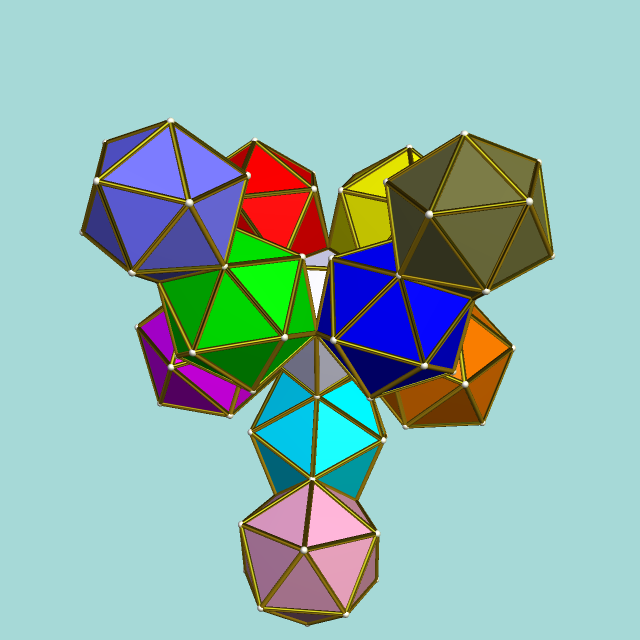ICN5D wrote:Yes, this would work. An interesting algorithm would be one that computes a degenerate height based on the combination of operators in unit edge lacing.
What is the general effect on n-simplices, as n grows? What happens to the clustering of vertices? Where is the volume concentrated?
I haven't studied the n-simplex enough to say for sure, but from the Wikipedia volume formula, it would appear that as n increases the total bulk enclosed inside an n-simplex decreases, and tends towards 0 as n approaches infinity. That is, the higher the dimension, the less volume the n-simplex occupies. Also, its dihedral angle approaches 90° as n approaches infinity, so the simplex becomes more and more "square-like" in very high dimensions.
The topological method is the original rubric in my notation, in a tesselationist method. The unit edges are a new thing, and interesting as well.
I think I'm going to include a subscript for the axis in motion with the spin operator. So, the |O>|Ow means to hold plane XYZ stationary, allowing the cone endcaps stretched along W to rotate in a non-bisecting manner into V. This will clear up all of the "prismic, triangular, toric" ambiguity. Does that work better?
If you're going to be using subscripts, I highly recommend using numerical subscripts instead of letters, because (1) our unfortunate convention of starting at X, Y, Z means that in 4D and beyond we have to do an ugly jump back to W then count backwards, which is very jarring. And (2) we run out of letters at 26D. What if we wanted to describe a 27D object?
I vote for using numerical subscripts. It also makes the notation more self-consistent, since ||||O4 tells you exactly which symbol corresponds with the axis that will participate in the rotation, as opposed to ||||Ow, which requires mental effort to determine which symbol it might correspond with. (In this case it doesn't matter, but in some cases it does.)
This should allow the cone atop cone and line atop cylinder projections to work as one, and create the duocylinder-circle convex hull.
 Excellent idea!
Excellent idea! 




